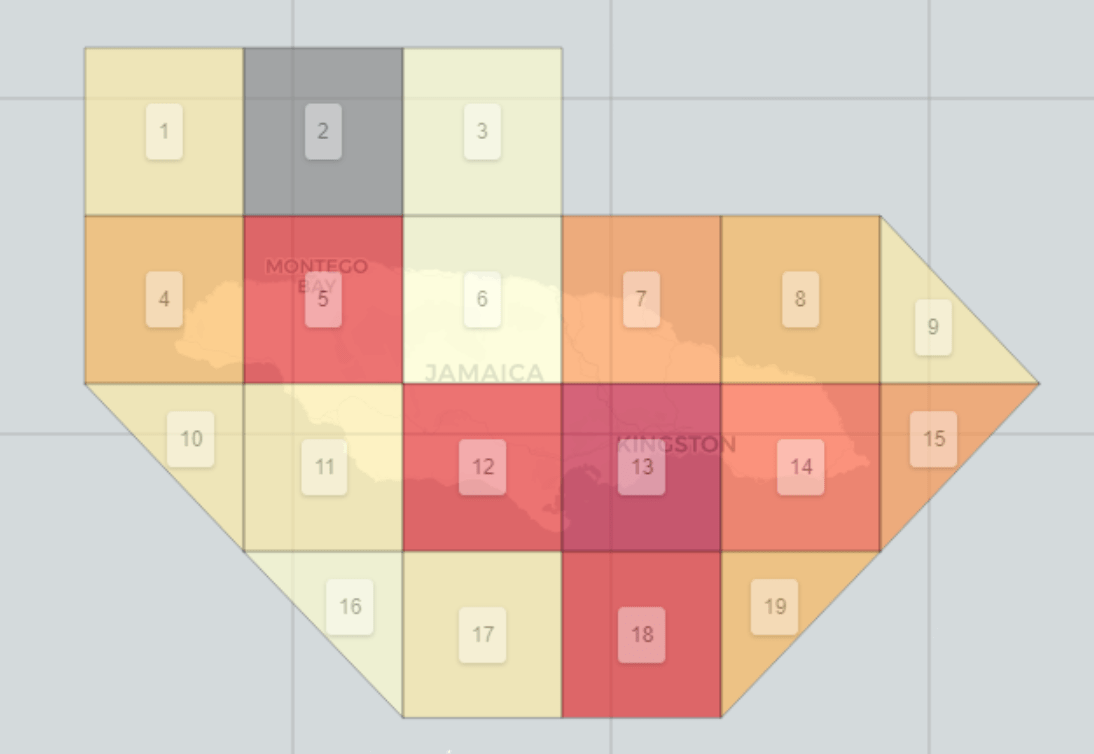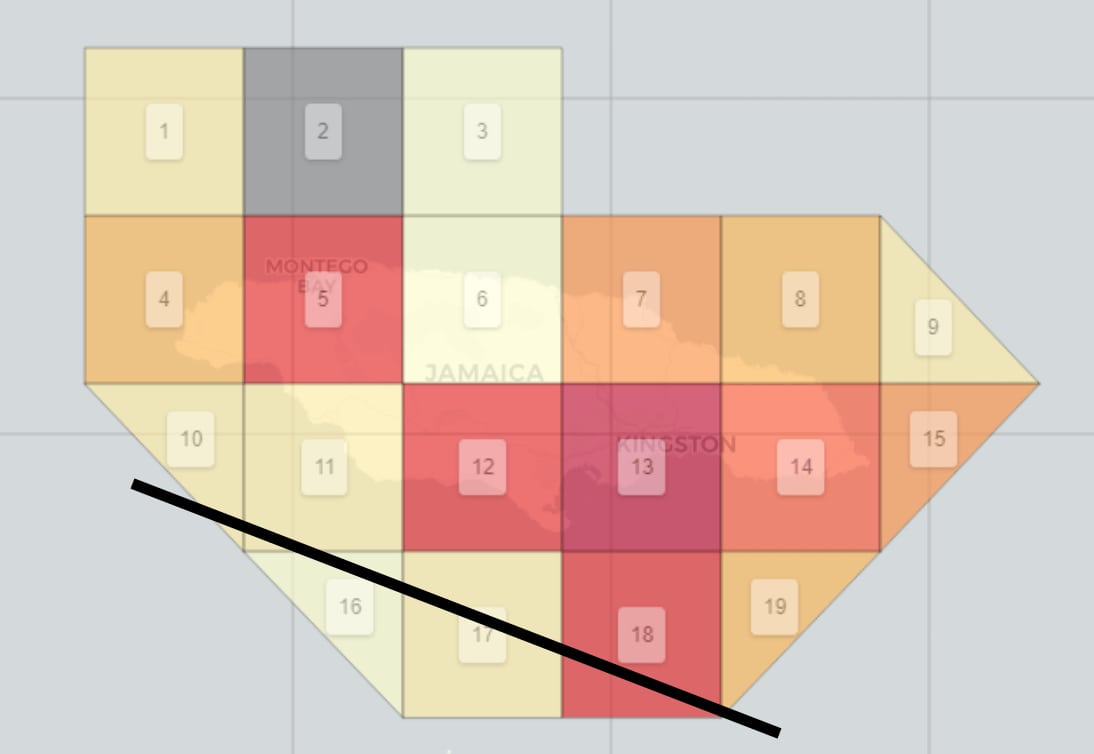Jamaica battered by hurricane Beryl, but IBRD catastrophe bond appears safe

Jamaica has been battered by the passage of major hurricane Beryl just off its southern coast. But, for holders of the World Bank facilitated $150 million parametric IBRD CAR Jamaica 2024 catastrophe bond transaction, early analysis of the real-time storm track suggests that noteholders will not face any loss of principal.
It’s important to mention here that this is based on Artemis’ understanding of the cat bond and analysis, as well as the expert analysis of some of our catastrophe bond market sources that we have spoken with this morning, so not any kind of official determination.
As we’d been reporting, major hurricane Beryl approached Jamaica with sustained winds of 140 mph, brushing the south coast and causing damage even reaching into the capital of Kingston. The damage appears quite severe in reports, but encouragingly perhaps a little less so than feared, given the severity of the storm, and certainly less than had Jamaica taken a direct hit or Beryl not weakened slightly.
At that time, when hurricane Beryl was at its closest, the storms central pressure had been rising though and this, plus location, are the important factors in determining whether Jamaica’s parametric IBRD catastrophe bond would trigger, or not.
When hurricane Beryl was deemed to be brushing the coast of Jamaica its central pressure was reported to be 959mb.
The central pressure then rose to 961mb at the next NHC update and 965mb at the latest we’ve seen, so a definite rising and weakening trend, with winds down to 125 mph at 06:00 UTC.
Sources have looked at hurricane Beryl’s real-time track data and plotted the GPS location points against the parametric grid used for the IBRD cat bonds parametric trigger.
 That trigger construction can be seen here (to the right), with Jamaica and its surrounds broken into small boxes, each requiring the storm to pass through, but with a minimum central pressure low enough to activate the coverage from the notes.
That trigger construction can be seen here (to the right), with Jamaica and its surrounds broken into small boxes, each requiring the storm to pass through, but with a minimum central pressure low enough to activate the coverage from the notes.
The cat bond parametric trigger design features this a grid structure broken into 19 areas on and around the island of Jamaica. A payout can only be triggered if a storm passes through one or more of these areas and the central pressure of the storm is at or below specified intensity thresholds.
Analysis of the real-time track data from hurricane Beryl suggests the storm did pass into a couple of boxes, but with a central pressure higher than would be needed to trigger the cat bond notes.
You can see just how close hurricane Beryl’s center got to Jamaica in the satellite image further up this article.
A source has also looked at what is called the “b-deck” wind speed data and coordinate information, which is what the calculation agent for the catastrophe bond would use, and plotted that against GPS coordinates, again finding that while hurricane Beryl seems to have passed through some parametric grid zones, it was not at a low enough pressure to activate Jamaica’s catastrophe bond coverage.
 The two parametric trigger grid zones that hurricane Beryl passed through are said to have required a minimum central pressure of 950mb or lower for the first and 940mb or lower for the second.
The two parametric trigger grid zones that hurricane Beryl passed through are said to have required a minimum central pressure of 950mb or lower for the first and 940mb or lower for the second.
This image to the right shows a rough approximation for what the b-deck track data suggests, indicating which boxes of the parametric grid Beryl is thought to have passed into. The highest pressure threshold, trigger point, is 950mb in box 18, after which the others are lower.
It is worth noting that the next closest box to the track data (box 12 in the image) had a 960mb threshold, so any adjustment to the track could perhaps bring heightened risk (given the 959mb NOAA recording around the time Beryl was closest).
But, as the “b-deck” track data from the Automated Tropical Cyclone Forecast (ATCF) System is already available and we’re told is the data source that is used for a calculation process for the cat bond, it seems in this case a revision may not be possible, unlike with older cat bonds that used the “best track” data that in some cases took weeks to be released and was reanalysed and sometimes revised as well.
So, on that basis, it appears that holders of the Jamaica parametric catastrophe bond notes will be safe from losses from hurricane Beryl. But, again, we do have to caution that this is not an official determination and is based on very early analysis after the storms passing.
It still seems likely, as we reported yesterday, that the CCRIF SPC parametric cyclone insurance that Jamaica has will be activated and some kind of payout be due to the island from that responsive protection source.
Beyond that, there will be insured losses to deal with and rating agency AM Best did note that Caribbean insurers are generally retaining more of their losses, due to the harder reinsurance market, raised attachments and greater retention levels as a result.
Now, hurricane Beryl is moving just to the south of the Cayman Islands, where strong tropical storm force winds will be felt but those islands are also set to avoid the worst of this still major storm, thankfully.
After which hurricane Beryl heads for the Yucatan, where it is expected to be a Category 1 storm at landfall, which won’t be sufficiently intense to trouble Mexico’s IBRD catastrophe bond noteholders, but may still be a damaging and dangerous impact to those in its path.
Beyond the Yucatan is where uncertainty comes back again, as the models remain split on hurricane Beryl curving into northern Mexico’s Gulf Coast as a weak Category 1 storm, or even a strong tropical storm. Versus some other model scenarios that continue to suggest some intensification is possible and a more eastward track towards the Texas coastline.
As a result, we’ll be watching hurricane Beryl for a few more days it seems.
Track the 2024 Atlantic tropical storm and hurricane season on our dedicated page and we’ll update you as new information emerges.






